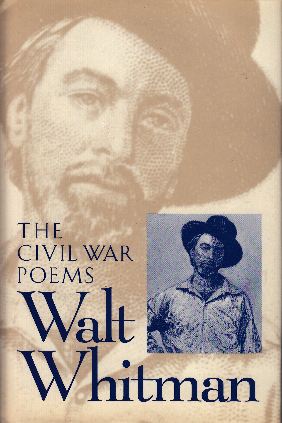Understanding Walt Whitman
Posted By Norman Gasbarro on August 31, 2012

The largest, single monument honoring a Civil War-era personage in Pennsylvania, is not a stone temple on the Gettysburg battlefield but is a bridge between Pennsylvania and New Jersey. Named the “Walt Whitman Bridge” when it opened in 1957, it is today one of the largest suspension bridges on the east coast of the United States and one of five bridges operated and maintained by the Delaware River Port Authority. Arguably, it can be said that it is the most expensive memorial in the country dedicated to any individual participant in the war, North or South.
Walt Whitman (1819-1892) is considered by many to be the first modern American poet. In addition to writing poetry, he is known as a journalist, an essayist, a novelist, and teacher – as well as his Civil War roles as a government clerk and volunteer nurse.
It cannot be said of Whitman that he was the literary voice of the Civil War – a tribute that most critics believe rightly belongs to Abraham Lincoln – but as a voice from the Civil War, he may may stand alone in explaining through literature the transition from the ante-bellum era to the modern era.
No soldiers marched into battle singing tunes set to his words. Nevertheless, his words do convey a vivid picture of what going into battle must have meant to those who willingly and unwilling did so. There are words describing every major event of the war – specifically and generally – from the outset to the assassination of Lincoln.
To best understand Walt Whitman it is necessary to read him in the “raw,” unfettered by what critics have said about him – to look at his words as he wrote them, and try to understand them in that context.
A short anthology, The Civil War Poems: Walt Whitman, permits the reader to do just that. There is no text other than the poems themselves. Interpretation is left to the reader, with the exception of some brief notes on the dust jacket explaining the volume’s arrangement. Published in 1994 by Barnes and Noble, this small book of 103 pages is divided into three sections: (1) Memories of President Lincoln; (2) Drum-Taps; and (3) Song of the Open Road.
The four poems on Lincoln include the most familiar, “O Captain! My Captain!” to the less familiar “This Dust Was Once the Man.”
Part of one poem from the second section is worth repeating. The lines from “Beat! Beat! Drums!” portray the call to arms as it must have impacted the men and women of the Lykens Valley area:
Beat! beat! drums! – blow! bugles! blow!
Through the windows – through doors – burst like a ruthless force.
Into the solemn church, and scatter the congregation,
Into the school where the scholar is studying;
Leave not the bridegroom quiet – no happiness must he have now with his bride,
Nor the peaceful farmer any peace, ploughing his field or gathering his grain,
So fierce you whirr and pound you drums – so shrill you bugles blow.
The controversies surrounding Whitman are many – from his position on slavery to his sexual orientation – and critics consider these positions when evaluating his works and his influence on American literature.
Walt Whitman remains a difficult figure to understand but any study of the Civil War cannot ignore him. The bridge that connects Pennsylvania and New Jersey, named in his honor, serves as a constant reminder of that.
In 1940, Whitman was recognized as one of the five greatest American poets with a stamp in the Famous Americans series:

For a brief biography of Walt Whitman, found on Wikipedia, click here.
For the Delaware River Port Authority‘s web site feature on the 50th Anniversary of the Walt Whitman Bridge, click here.
 ;
;



Comments